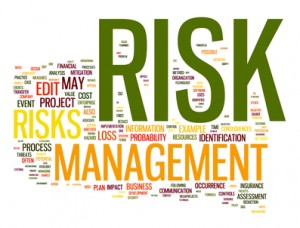Does the Agile Team have Little Direction from the Project Manager?
 Rajni Rethesh
Rajni Rethesh
Agile and Scrum methodologies have transformed the way teams approach project management. They emphasize flexibility, collaboration, and delivering value in incremental steps. However, many people still wonder about the role of a project manager in Agile—particularly since Agile encourages self-organizing teams. This leads to the question: Does an Agile team depend on a project manager?
The short answer is yes but with a twist. Let’s explore the project manager role in Agile methodology, how it differs from traditional project management, and why it remains crucial in development.
Also read: Top 10 Challenges Faced by Technical Project Managers and How to Overcome Them
If you’re looking to enhance your Agile project management practices and find the perfect balance between leadership and team autonomy, explore how Middleware Jira Plugin can bridge the gap between business goals and development teams. With integrated tools and strategic oversight, Middleware can help streamline communication, provide real-time visibility, and ensure that your projects stay on track and aligned with your organization’s objectives. Ready to level up your Agile workflow? Let’s start the conversation today!
Traditional vs. Agile Project Management
Project Manager Role in Traditional Project Management

In traditional project management, the project manager plays a central role in planning, directing, and controlling the project from start to finish. They set goals, manage resources, define deadlines, and track the project's progress to ensure everything stays on track.
Project Manager Role in Agile Development

In contrast, Agile development puts more emphasis on team autonomy. Agile teams are self-organizing, with specific roles like the Scrum Master and Product Owner overseeing the process. This setup often leads people to question, does the Agile team has little direction from a project manager.
While it’s true that Agile teams manage much of the day-to-day work themselves, the project manager role in Agile development is far from irrelevant. Instead, it evolves to focus on strategic oversight, ensuring that the project aligns with the broader business objectives, managing risks, and handling external communication.
Also read: What is Agile Methodology? Exploring Agile Frameworks for Technical Project Managers
Role of a Project Manager in Agile
Even though Agile methodologies like Scrum rely heavily on self-organizing teams, the project manager role in Agile Methodology remains essential for the following reasons:
Facilitating Collaboration Across Teams

In larger organizations, Agile teams often work with other departments or external teams. The project manager plays a key role in facilitating collaboration between these teams, ensuring smooth communication, and managing dependencies. They help identify any potential bottlenecks and mitigate delays, keeping the project moving forward. Know more about Cross-Functional Collaboration: Aligning Engineering, Design, and Product Teams for Success
Stakeholder Management and Communication
Effective communication with stakeholders is crucial for project success. While the Product Owner handles the product vision, the project manager is responsible for managing stakeholder expectations, keeping them informed about progress, and ensuring the project aligns with business goals. This role ensures that stakeholders are aware of any risks, changes, or delays. Also read: Effective Stakeholder Management: Balancing Technical and Business Expectations
Aligning with Organizational Strategy

The project manager ensures that Agile teams stay aligned with the organization's long-term objectives. While Agile focuses on delivering incremental value, the project manager ensures these increments fit into the broader strategy and meet the company’s goals.
Risk and Issue Management

Despite Agile’s flexibility, projects are still subject to risks and issues. The project manager helps the team identify, assess, and mitigate risks, providing guidance when challenges arise. They also help navigate any roadblocks that may prevent the team from delivering value effectively. Also read: Risk Management in Agile Projects: Balancing Speed and Stability
Resource and Budget Management

Agile teams need to be adequately staffed and equipped, and the project manager ensures that resources are efficiently allocated. They help track the budget, make sure resources are available when needed, and ensure the project stays within financial constraints.
Continuous Improvement and Process Optimization

One of the core principles of Agile is continuous improvement. The project manager helps the team reflect on their processes, identify inefficiencies, and make adjustments to improve performance. They also work closely with the Scrum Master to identify opportunities for process optimization.
Does an Agile Team Depend on a Project Manager?

You might be wondering, does an Agile team depend on a project manager in the same way as traditional teams? The answer is nuanced. In Agile, the team is designed to be autonomous, and empowered to make decisions and manage their workflow. However, this doesn't mean they don't need guidance. The project manager’s role has shifted from micro-managing the day-to-day tasks to providing strategic direction, managing external communication, and aligning the project with broader goals.
While Agile teams don’t require day-to-day supervision from a project manager, they still rely on them for ensuring the project stays on course, mitigating risks, managing resources, and maintaining alignment with organizational priorities. So, although the project manager’s role is different, they are still an essential part of Agile’s overall success.
Also read: 5 Must-Have Jira Dashboards for Technical Project Managers
Conclusion - Does the Agile Team have Little Direction from Project Manager?
The project manager role in Agile methodology is critical, even if it differs from traditional project management. Instead of focusing on detailed planning and daily task management, Agile project managers provide strategic oversight, help align teams with business goals, and ensure that the project moves forward smoothly.
In Agile development, the question isn't about whether the project manager is needed—it’s about how the role has evolved to support a more flexible, collaborative approach to project success. Does an Agile team depend on a project manager? Yes, but in a way that supports self-organization, fosters collaboration, and drives continuous improvement across the organization.
So, while Agile teams are empowered to make decisions and manage their tasks independently, the project manager’s guidance remains crucial to ensure that the project stays aligned with the big picture and delivers real value.
If you’re looking to enhance your Agile project management practices and find the perfect balance between leadership and team autonomy, explore how Middleware Jira Plugin can bridge the gap between business goals and development teams. With integrated tools and strategic oversight, Middleware can help streamline communication, provide real-time visibility, and ensure that your projects stay on track and aligned with your organization’s objectives. Ready to level up your Agile workflow? Let’s start the conversation today!
FAQs
1. What is the role of a project manager in a Scrum team?
In a Scrum team, the traditional role of the project manager is typically distributed among the Scrum Master and the Product Owner. The Scrum Master acts as a facilitator, ensuring that the team adheres to Scrum practices, removes obstacles, and fosters an environment for self-organization. The Product Owner is responsible for defining and prioritizing the product backlog to ensure alignment with business goals. Therefore, while there isn't a traditional project manager role in Scrum, the Scrum Master plays a leadership role in guiding the team towards continuous improvement.
2. What is the role of a project manager in Agile?
In Agile methodologies, the role of the project manager evolves from traditional management duties. While Agile teams are self-organizing, the project manager's responsibilities focus on strategic oversight and ensuring that the project aligns with the overall business goals. They help facilitate communication, remove roadblocks, and support the Agile team by ensuring the project stays on track, but without micromanaging the daily activities. Their role is more about leadership, fostering collaboration, and driving continuous improvement within the organization.
3. What is the role of a project manager in scaled agile?
In Scaled Agile Framework (SAFe) or other scaled Agile frameworks, the role of a project manager is typically redefined to focus on coordination across multiple teams. In these environments, the project manager's job is to ensure alignment between various Agile teams, manage dependencies, and maintain a clear flow of information at the program level. They work closely with Release Train Engineers (RTEs) and Product Managers to ensure that the larger program or solution delivers value and stays in sync with business objectives. The role is less about direct management and more about enabling collaboration and keeping teams aligned.
Subscribe to my newsletter
Read articles from Rajni Rethesh directly inside your inbox. Subscribe to the newsletter, and don't miss out.
Written by

Rajni Rethesh
Rajni Rethesh
I'm a senior technical content writer with a knack for writing just about anything, but right now, I'm all about technical writing. I've been cranking out IT articles for the past decade, so I know my stuff. When I'm not geeking out over tech, you can catch me turning everyday folks into fictional characters or getting lost in a good book in my little fantasy bubble.


